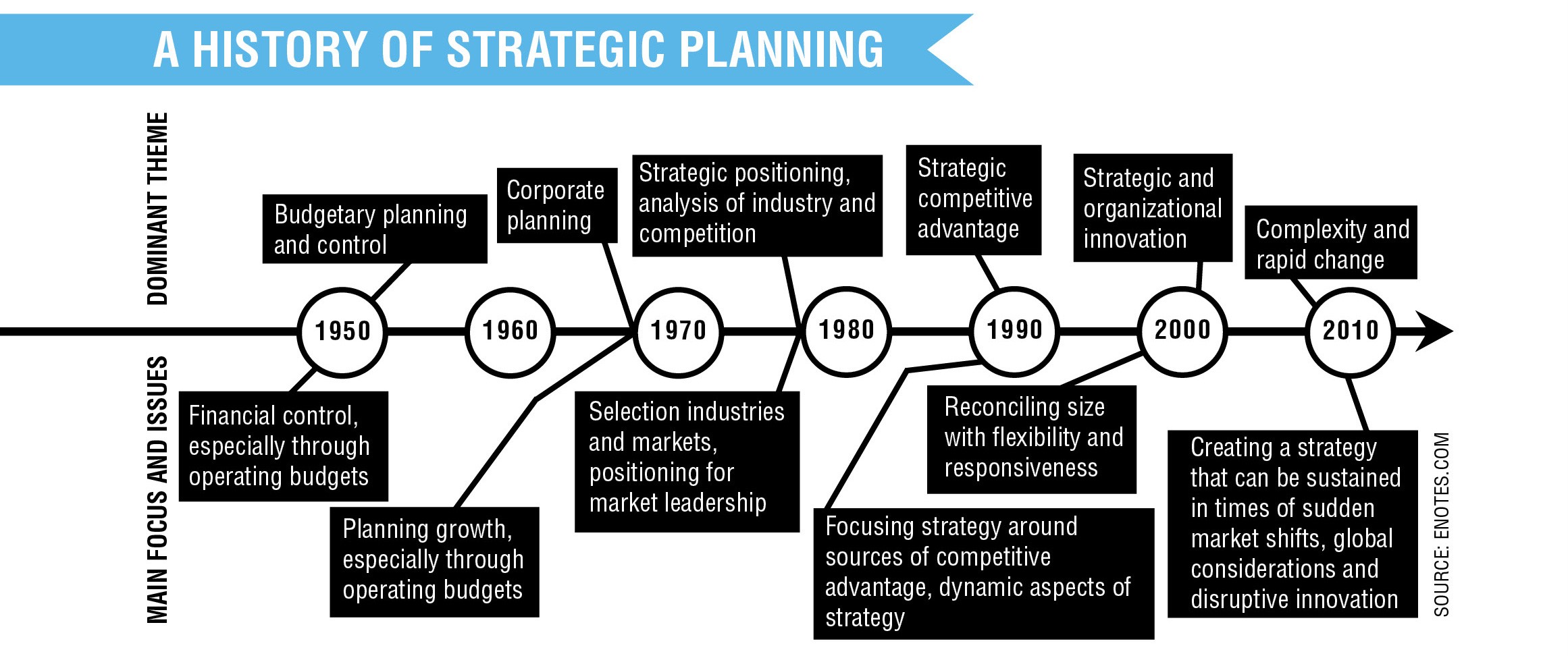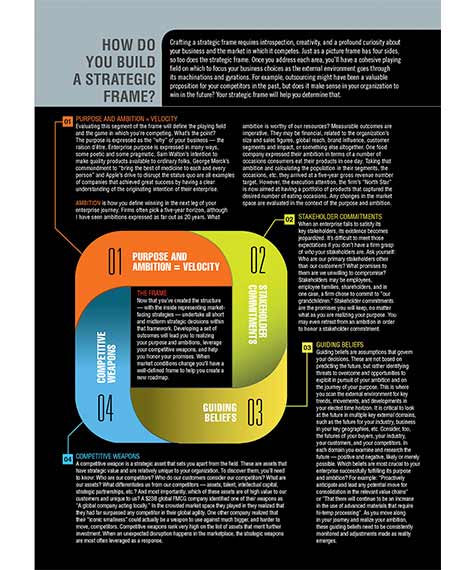Strategic planning is an evolving process. Just as our products and services have changed over time, so too have the ways we sell, foster growth and anticipate challenges. The economic crisis of 2008 put every strategist’s weakness on display, demonstrating that even the best-laid plans can quickly unravel.
The ensuing business fallout led one leading consultant to proclaim in a 2010 Wall Street Journal article: “Strategy, as we know it, is dead.” It’s a provocative statement that begs for refinement. Strategy as it was is dead. Predictability is dead. Rigidity is dead. But innovative strategic planning is very much alive. We refer to the product of that process as the strategic frame.
The strategic frame — a concept proposed by Allan Cohen in the Strategy & Leadership article “The Strategic Frame: Making Decisions that Produce Results” and further refined by Insigniam — offers a revised approach to planning that accounts for your company’s competitive assets and core beliefs about the future, charts a course toward success, but also allows you to respond to shifting conditions as they happen. If you’re thinking, “That’s what we’ve been doing,” I disagree. The strategic planning of the past attempted to do all those things, but failed for a few reasons.
How We Got Here
Traditional strategic planning plotted a course between point A and point B, with the latter often representing a more lucrative version of the former. Its fundamental purpose was to understand the past and the present external environment in your market or enterprise space and use that insight to predict the future, thereby allowing executives to consistently generate reliable business performance.
That plan’s fatal flaw is that once changes in the external environment render the predictions obsolete, the strategic plan becomes obsolete as well. Organizations felt this acutely when the Great Recession firmly took hold of the economy and consumers’ dollars (and jobs). At the end of 2008, no one could have predicted the depth and length of the economic crisis. No longer could businesses hang their success on continued economic growth, they had to suffer the blow without a plan to bounce out of it.
There used to be a belief that you could stand in the present, look at what you’ve learned from the past, and extrapolate a desired future position. In reality, things are not linear. In these days of high technology innovation, political transitions (some peaceful and some not), and lightning-fast communication, the only certainty is that there will be unexpected disruptions and changes in the future. As any element in the system changes, it in turn changes the environment in ways subtle and substantial. Huge events can have negligible effects and small events can have catastrophic effects.
It’s the difference between driving through a parking lot with lots of signs and very clear instructions and lanes and navigating your car around traffic that’s traveling exponentially faster and faster in all different directions In the first instance you follow an orderly, stable path, in the latter instance you maneuver to your desired endpoint through the variability with some key levers—steering wheel, mirrors, gas pedal and brakes. The distinction between a strategic frame and a strategic plan is analogous. A strategic plan has a prescribed, set of goals and tactics to accomplish objectives that are reasonable given the past. With the frame you have your eye on your ambition, a bold, inspiring and often unprecedented objective derived from your purpose; your key levers with which to maneuver are your purpose, your promises, your guiding beliefs and your competitive weapons.

The Strategic Frame
The strategic frame takes all of the above into account. The idea is to identify the organization’s overall purpose and ambition — the North Star by which it is navigating — as well as stakeholder promises, guiding beliefs about the future, and strategic assets (often called competitive weapons).
It forces leadership to acknowledge things like disruptive technology and add it to the contingency plan. Think about Blockbuster for a moment. Was the adoption of streaming media a flash-in-the-night kind of event? No, we all knew it was coming. Yet the company that owned the market on video rentals wasn’t able to overcome it. The shopping center down the street still has the shadows of Blockbuster’s iconic blue and yellow logo etched in the stucco, a somber reminder that even kings of the marketplace can be dethroned.







